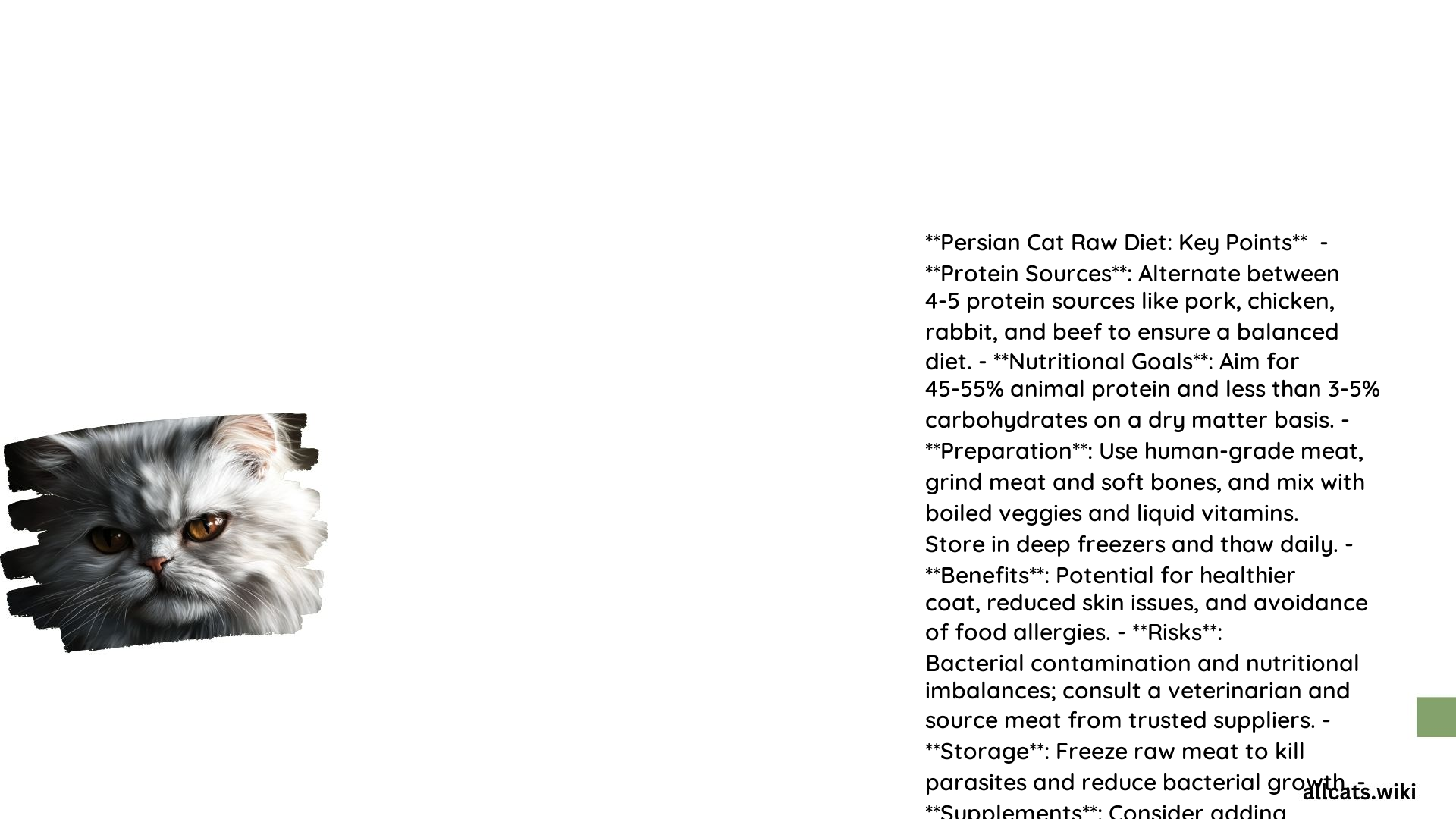Summary

Feeding a raw diet to Persian cats can provide numerous benefits, including improved coat quality, enhanced digestive health, and better weight management. However, it’s crucial to ensure the diet is balanced and safe to avoid potential risks like nutritional deficiencies and bacterial contamination. This article explores the advantages, considerations, and best practices for implementing a raw diet for Persian cats.
What are the Benefits of a Raw Diet for Persian Cats?

1. Improved Coat Quality and Skin Health
A raw diet can contribute to a shinier, healthier coat and improved skin health in Persian cats. The natural fats and nutrients found in raw meat can nourish the fur, resulting in a softer, more vibrant appearance.
2. Enhanced Digestive Health
Switching to a raw diet can lead to better gastrointestinal health in Persian cats. They often experience improved digestion, resulting in smaller and less odorous stools.
3. Weight Management
Raw diets, being lower in carbohydrates, can aid in weight management, which is particularly beneficial for Persian cats prone to obesity.
4. Improved Dental Health
Chewing on raw meat and bones can help reduce plaque and tartar buildup, promoting healthier teeth and gums in Persian cats.
What are the Risks and Considerations of a Raw Diet for Persian Cats?
1. Nutritional Deficiencies
A well-planned raw diet must ensure it meets all of a Persian cat’s nutritional needs. Without proper planning, nutritional deficiencies can occur. It is crucial to include a variety of meats, organs, and bones to achieve a balanced diet.
2. Food Safety Concerns
Raw meat can harbor pathogens like Salmonella and E. coli. Proper handling and hygiene practices are essential to minimize these risks. Freezing the meat can help kill certain parasites and reduce bacterial growth.
3. Bacterial Contamination
Ensuring the meat comes from a reliable and safe source is critical. Trusted suppliers or butchers who handle and store meat properly can help mitigate this risk.
How to Ensure a Balanced and Safe Raw Diet for Persian Cats?
1. Recommended Ingredients
Include a variety of meats such as chicken, turkey, beef, and lamb. Organs like liver and bones should also be part of the diet to ensure a well-rounded nutrient profile.
2. Portion Sizes and Preparation Methods
Consult with a veterinarian to determine the appropriate portion sizes based on your Persian cat’s age, size, and health status. Blanching or lightly cooking the meat can be done to make it more palatable, but it is generally recommended to feed raw.
3. Necessary Supplements
Depending on the specific ingredients used, supplements may be needed to ensure the diet is complete and balanced. A veterinarian can advise on any necessary supplements.
4. Sample Feeding Schedule
A typical feeding schedule might include:
– Morning: 1/4 to 1/3 pound of raw meat (e.g., chicken or turkey) per 10 pounds of body weight.
– Evening: 1/4 to 1/3 pound of raw meat (e.g., beef or lamb) per 10 pounds of body weight.
– Organs: Include organs like liver 1-2 times a week.
– Bones: Provide raw bones 1-2 times a week to support dental health.
Additional Tips
- Consult a Veterinarian: Before starting a raw diet, it is essential to consult with a veterinarian to tailor the diet to your Persian cat’s specific needs and monitor their health closely during any dietary transition.
- Proper Handling: Always handle raw meat safely to minimize the risk of bacterial contamination. Wash hands thoroughly, and clean any surfaces that come into contact with the raw meat.
Reference:
-
The Benefits of Raw Diets for Cats: Myths and Facts – Pet Ponderosa
[https://petponderosa.com/2024/02/the-benefits-of-raw-diets-for-cats-myths-and-facts/] -
Advice on Feeding Raw Meat to Persian Cats – Reddit
[https://www.reddit.com/r/persiancat/comments/14gqsaw/advice_please/] -
One Veterinarian’s Experience with Owners Feeding Raw Meat – PMC
[https://www.ncbi.nlm.nih.gov/pmc/articles/PMC6515799/]
